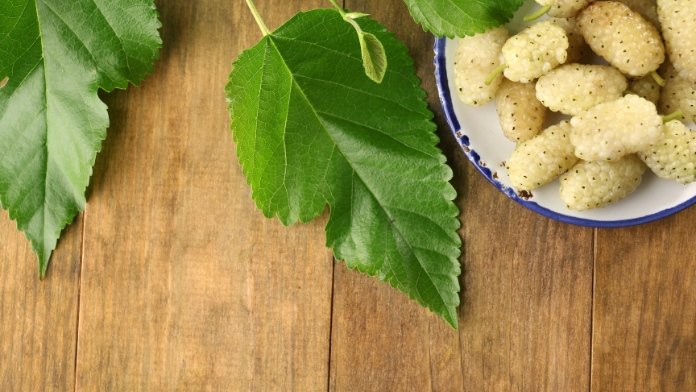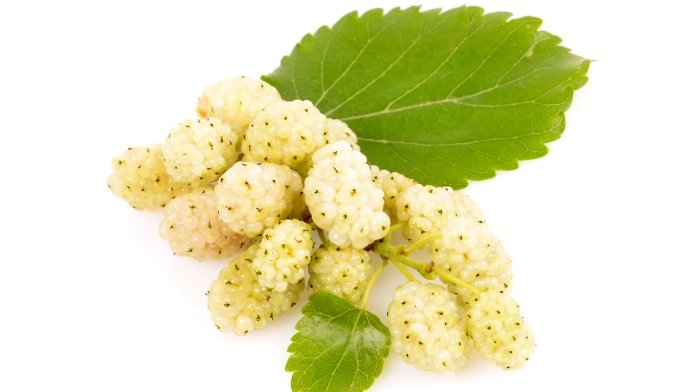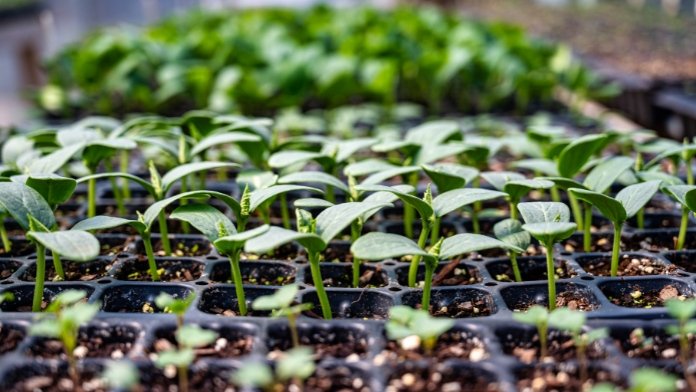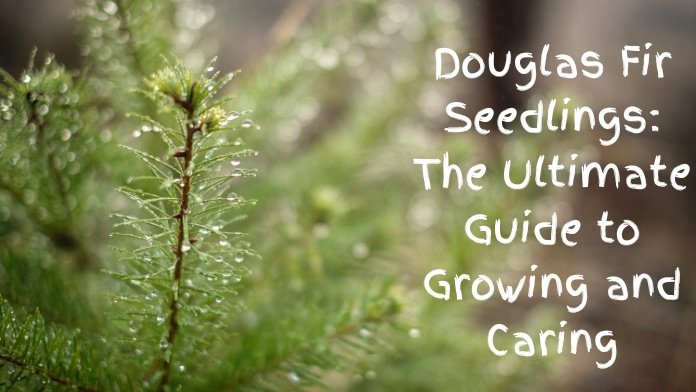
Mulberry trees are common on forest edges and grow along roadsides, vacant lots, and in the landscape. Seedlings and saplings are usually found growing around mature mulberry trees. Mulberries cannot tolerate shade but can tolerate poor soil and dry conditions.
White mulberry seedlings are a type of seed used to grow mulberry trees. They are made by placing mulberry seeds and fertilizer in a seedling tray.
Each white mulberry seed can grow into a plant 20 to 50 feet or more. This native of China is related to our native red mulberry. White mulberry has hairless leaves, reddish-brown buds, and yellow-brown bark; however, the two can hybridize.
What is White Mulberry?
Morus alba, also known as white mulberry, common mulberry, and silkworm mulberry,[2] is a fast-growing, small to medium-sized mulberry tree, ranging from 10 to 20 m (33 to 66 ft) in height. It is generally a short-lived tree, comparable to humans, although some specimens are known to be over 250 years old.
White mulberry is widely grown to feed silkworms used in commercial silk production. It is also notable for its rapid pollen release, emitted at more than half the speed of sound.[11] Its berries are edible when ripe.
Uses of White Mulberry

- White mulberry leaves are the preferred raw material for silkworms. They are also harvested as fodder for livestock (cattle, goats, etc.), where the dry season limits the availability of terrestrial plants.
- The leaves are made into tea in Korea. The fruits are also eaten, often dried or made into wine. [6][14]
- A fruitless mulberry tree was developed in the United States for silk production in landscaping, but the mulberry variety is now used as an ornamental tree to provide shade without fruiting.
- White mulberry, Morus alba ‘Pendula’ is used as an ornamental plant. It was planted at several large stations built along the Lackawanna Railroad in New Jersey in the late 19th and early 20th centuries. The species is a grass plant found in the desert cities of the southwestern United States, valued for its shade and cylindrical berry clusters consisting of sweet purple-white fruit. Tree pollen is problematic in some cities where it is responsible for an increase in hay fever.
How to grow white mulberry from seed?
Mulberry plants can be grown from seed or cuttings. When grown from seed, seeds take more than ten months to germinate. To do this, soak the seeds in hot water for a week, which will speed up the germination process. After a week, plant the seeds in a potting mix and cover them with 1/4 inch of soil.
How Do you Transplant Mulberry Seedlings?
It is best to transplant in spring or fall when dormant. Leave a 20-30″ root ball or, in our case, bare roots as we dig by hand to move. We pull the roots through the soil to adhere them to the plant as much as possible. Dig a hole where you plan to plant. Leave extra space if needed.
How Do You Identify a White Mulberry Tree?
White mulberry is a medium-sized tree with a short trunk, a broad, rounded crown, and many thin branches. Leaves are alternate, simple, 2 to 6 inches long, 0 to 5 lobed, densely toothed, and with a pointed tip. Three central veins emerge from the base. The lower surface is smooth and paler than the upper surface.
White Mulberry Leaves
White mulberry leaves are usually glossy and thin, with alternating length and shape depending on the plant’s age. Young shoots develop leaves up to 30 cm (12 in) with deep, detailed lobes. However, older shoots have average leaf lengths of 2 to 6 inches (5 to 15 cm), are not lobed, and are toothed or toothed at the edges.
How to Care for White Mulberry Seedlings in Water
Here are the primary care requirements for growing the easy-care and hardy white mulberry tree:
- Plant in full sun.
- Provide neutral, well-draining soil.
- Water well for the first two years of the tree’s life, then pull back on supplemental watering.
- Prune and remove new seedlings consistently.

Light
The species performs best if kept in an area with lots of sun but is incredibly adaptable and tolerates some sun or partial shade. Although it can thrive in almost all conditions, cultivars of the species are best kept in full sun.
Soil
It’s rare to find a plant or tree that grows so well in any soil condition, like the white mulberry. The only condition that it will not survive is constantly saturated soil. Provide a cultivation with rich, well-drained clay soil with a neutral pH.
Water
Once established, white mulberry plants require no supplemental watering and are well suited to areas that experience regular drought conditions during that time.
But until then, you should proceed as you usually would with most plants and give the newly planted mulberry tree enough water to establish a robust root system. Doing this for the first two years will ensure your tree is healthy enough to handle the stress.
Temperature and Humidity
White mulberry does not have resistance problems. It resists drought and cold weather quite well in its hardy zones, USDA 4 through 8, but the main climate concern regarding the species comes from its weak wood.
Fertilizer
You should not add supplemental fertilizers to your white mulberry plant, as it thrives independently, even in the harshest conditions. Adding fertilizer will only accelerate the growth of these fast-growing trees, further weakening the wood and possibly causing tree damage during storms and bad winter weather.
Planting Instructions
However, white mulberries cannot tolerate as much shade as native U.S. mulberries. Red mulberry seeds are dormant and require winter chill or a 60-day chill layer.
The easiest method is to soak the seeds and then sow them below the surface of the soil, letting Mother Nature wake them up naturally for spring germination.
Varieties of White Mulberry Trees

Here are some fruitless white mulberry varieties:
- Morus alba ‘Chaparral’ is a dwarf fruitless cultivar that grows to a maximum height of 8 feet and deeply weeping.
- Morus alba ‘Pendula’ is another fruitless dwarf and weeping vine that grows up to 13 feet tall.
- Morus alba ‘Stribling,’ ‘Urban‘, and ‘Kingan’ are fruitless male cultivars with broad, irregular, and medium green leaves.
- Morus alba ‘Hampton’ is a fruitless cultivar that grows to 50 feet.
White Mulberry Pots and Transplants
White mulberry trees, specifically dwarf types, can be ideal container plants. Choose a large plastic container at least 12 inches wide and deep. Plastic is suitable because it will be light and mobile. Make sure the container has adequate drainage holes. Watch for root growth at the bottom of the pot. This means it’s time to repot into a larger pot so the roots don’t aggressively seek water outside the pot. Use a good mix of potting soil and perlite. Keep the pot in full sunlight (although it can tolerate shade) and water well.
Pruning
Pruning white mulberry trees should be done primarily to maintain the tree and to ensure that it does not break under the stress of winter weather or high winds. This should be done by looking for weak intersecting branches with deep crotches, damaged or dying branches, and wood growing inward toward the leader.
Propagate White Mulberry Trees
You can even take a 6 to 8-inch cutting from a white mulberry tree any time of year and stick it in the ground, and it will root right there. Or follow these steps:
- Using a sterile cutting tool, make a 6- to 8-inch cut (practically any time of year) and remove all leaves except the top.
- Glue the bottom of the cutting with the rooting hormone.
- Fill a pot with a well-draining soilless potting mix of equal parts peat moss, vermiculite, and perlite.
- Keep the pot in a shady place for up to 60 days to retain the roots.
- Water to keep it moist but not soaking.
- Before placing the cutting in a permanent home, gradually expose it to sunlight over a few weeks.
Common Plant Pests and Diseases

Morus alba does not suffer from many insect or disease problems. It will occasionally be infected with bacterial leaf blight, root rot, or canker, but none pose a life-threatening risk.
The insects that can attack your tree are usually flies and whiteflies, which are probably attracted to the fruit. Borers can be a problem in warmer climates but do not pose a serious risk. Ultimately, pests and diseases do not merit chemical intervention, and time usually resolves the problem.
The Month of Flowers

Flowers bloom from March to April.
How do White Mulberry Flowers Look and Smell?
The plant’s simple greenish-yellow flowers have no petals and are more delicate-looking. They are drooping clusters called catkins that are about half an inch long (female plants) or 1 inch long (male plants). If the unscented female catkins are fertilized, they will give way to berries in June.
Common Problems with White Mulberry Plants
In addition to the havoc caused by an invasive, fruiting white mulberry tree, there are several other problems with this plant.
Damaging Roots
Birds drop white mulberry seeds everywhere, and invasive roots can lift and damage sidewalks, foundations, drains, and sewer systems. It is essential to remove white mulberry shoots from vulnerable areas.
Weak Trunks
Young white mulberry trees, less than ten years old, may have weak, brittle trunks. This means they can easily break or tip over in high winds and heavy rain, damaging anything in their path.
FAQ
How to Take Care of a White Mulberry?
They do best in direct, long-lasting light ☀️ and should be within 1 foot of a window. White mulberry prefers well-draining soil. During the peak growing season, you may want to supplement your diet with light organic fertilizer. White mulberry belongs to the genus Morus and is native to China.
Do Mulberry Seeds Need Light for Germination?
Post-stratification: Sow seeds stratified on the soil’s surface, ideally in a peat-perlite mixture. Seeds need light to germinate. Alternating soil temperatures during the day (30°C) and night (20°C) promotes germination. Water evenly and regularly.
How Long Does it Take for Mulberry Seeds to Germinate?
Mulberry seeds do not require any stratification or treatment. They usually germinate within a few weeks. One disaster to avoid when growing seeds is slugs.
RELATED POSTS
View all


